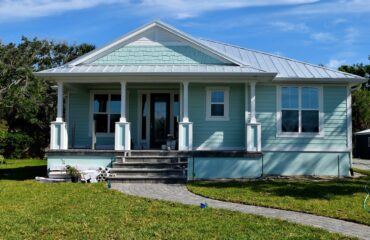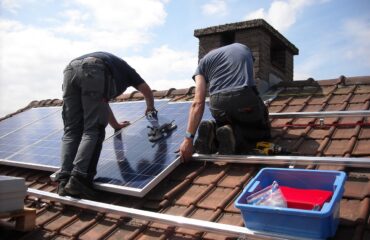When considering the best roofing material for coastal homes, options like metal roofs offer strength and resistance to corrosion. Roofing professionals can guide you in selecting synthetic materials engineered to resist saltwater and UV exposure, which are also excellent due to their durability and impact resistance. Tile roofing, made of materials like clay or concrete, provides aesthetic appeal and superior fire resistance essential in coastal areas. Impact-resistant shingles, with strengthened backing and enhanced seals, offer protection against severe weather conditions. Proper installation and maintenance, often performed by skilled roofing artisans, are critical factors for longevity in coastal environments. Discover more about the ideal roofing solutions for seaside homes.
Metal Roofing Options
Metal roofing options for coastal homes provide a durable, weather-resistant solution that offers longevity and protection against harsh coastal elements. When considering metal roofing for coastal properties, choosing materials that can withstand high winds, saltwater exposure, and intense sunlight in these areas is essential. Among the most popular choices are galvanized steel, aluminum, and copper roofs.
Galvanized steel roofs are known for their strength and resistance to corrosion, making them ideal for coastal regions. These roofs are typically coated with a layer of zinc to enhance durability. Aluminum roofs are lightweight, durable, and rust-resistant, making them a practical choice for homes near the coast. Additionally, copper roofs are valued for their aesthetic appeal and longevity, as they develop a distinctive patina over time.
Metal roofs can be installed in various styles, including standing seam, metal shingles, and corrugated panels, providing homeowners with options that suit their preferences and budget. Proper installation and maintenance are essential to ensure the longevity and performance of metal roofing in coastal environments.
Synthetic Roofing Materials
Synthetic roofing materials offer a versatile and resilient alternative for coastal homes, providing a durable solution that can withstand the challenges of harsh coastal environments. These materials are typically made from a combination of polymers, plastics, and rubber, engineered to resist the corrosive effects of saltwater, high winds, and intense UV exposure common in coastal regions. One of the critical advantages of synthetic roofing materials is their lightweight nature, which reduces the structural load on the building while maintaining high durability.
Additionally, synthetic roofing materials are highly resistant to mold, mildew, and rot, making them ideal for high humidity and precipitation areas. They also offer excellent impact resistance, protecting homes from debris carried by strong coastal winds. Installation of synthetic roofing materials is relatively straightforward, with many options available in interlocking panels or shingles that mimic the look of traditional roofing materials. Homeowners can choose from various styles and colors to suit their aesthetic preferences while ensuring long-lasting protection for their coastal property.
Tile Roofing Solutions
When considering roofing solutions for coastal homes, tile roofing emerges as a durable and aesthetically pleasing option that can withstand the challenges of harsh coastal environments. Tile roofing is famous for its longevity, with some types lasting over 50 years, making it a cost-effective choice in the long run. In coastal areas prone to high winds and saltwater exposure, tile roofs provide excellent resistance, reducing the risk of damage and corrosion compared to other roofing materials.
One key benefit of tile roofing is its superior fire resistance, which is vital for coastal homes where wildfires can be a concern. Additionally, tiles come in a variety of materials, such as clay, concrete, and terracotta, offering homeowners flexibility in both style and color to complement their homes’ architectural designs.
It is important to note that while tile roofing is durable, it is also heavier than some other roofing materials. Hence, proper installation by experienced professionals is essential to ensure structural integrity and longevity of the roof.
Impact-Resistant Shingles
Impact-resistant shingles are designed to enhance protection against severe weather conditions and potential damage. They offer coastal homeowners peace of mind, knowing their roofs are equipped to withstand impact forces. These shingles are constructed using durable materials such as asphalt, fiberglass, or composite materials to resist impact from hail, falling debris, and high winds commonly experienced in coastal regions. The design of impact-resistant shingles incorporates features like strengthened backing and enhanced adhesive seals to improve their resistance to damage.
One key advantage of impact-resistant shingles is their ability to bolster the need for frequent repairs or replacements due to weather-related incidents, saving homeowners time and money in the long run. Moreover, many insurance companies offer discounts on premiums for homes with impact-resistant roofing materials, making them a cost-effective choice for coastal properties. By investing in impact-resistant shingles, homeowners can fortify the longevity and durability of their roofs, providing a reliable shield against the unpredictable elements often faced in coastal environments.
Other Roofing Tips:





